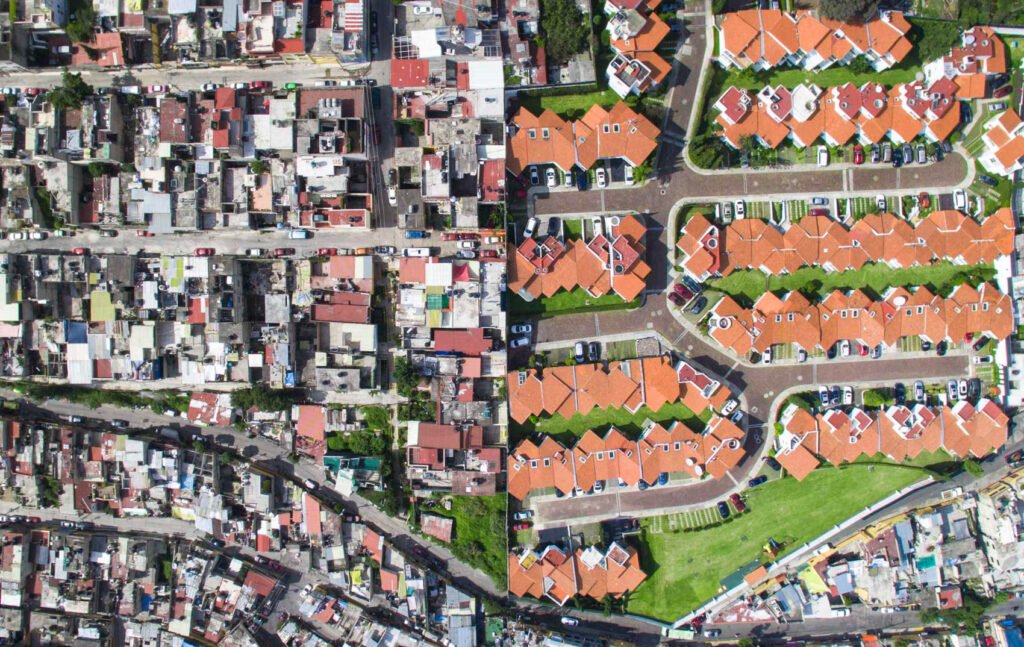Mexico City is facing a critical housing crisis: affordable housing, especially for working families is rapidly disappearing. The country’s capital is home to 29 million people; however while the city has a diverse cultural and social landscape, those from Hispanic backgrounds are finding it very difficult to get a property.

Gentrification
Over the past decade, Mexico City’s residential neighborhoods have experienced an increase in gentrification: wealthier people/families have invested in properties for urban renewal projects. Although these investments have aided in modernizing the city, they have displaced many low-income and working families who can no longer afford the increased rent. The working neighborhoods of Gustavo A. and Madero along with others are facing this issue.
Rise in Housing Prices
The gentrification of properties, along with inflation have caused housing prices to skyrocket in Mexico City. The inflated rental prices in neighborhoods have caused many families to disperse to squatter settlements on the perimeter of the city. Many families have also been forced to relocate to rural areas, causing a rise in unemployment and poverty as well.
Insufficient Housing Development
One of the core issues leading to the affordable housing issue in Mexico City is the lack of investment in affordable housing projects. The availability of low-cost homes is particularly limited in well-connected, central areas of the city, leaving low-income families with far less options. Many families in working-class neighborhoods are forced to settle in informal housing on the outskirts of the city, where access to basic services like healthcare, education, and public transportation is almost nonexistent.
Informal settlements or “colonias populares” are common in Mexico City. These areas often lack proper infrastructure, as they are built on land that is not officially recognized for residential use. These are often called ‘squattter settlements’, as mentioned above. Families living in these areas face challenges such as overcrowding, no sanitation, and poor access to public services.
As a result, many people in these neighborhoods live in poor conditions, leading to many issues related to health and well-being.
The Economic Strain on Hispanic Families
Despite Mexico’s growing economy, wages for many of these families remain the same, making it harder to keep up with the increasing cost of living. With housing consuming a larger portion of their income, many families are forced to cut back on essentials such as food, healthcare, and education. Additionally, a lack of affordable housing forces many to accept overcrowded living conditions, where multiple generations may have to share small spaces.
The affordable housing crisis in Mexico City is alarming when viewed through the lens of statistics. Approximately 9 million people live in inadequate housing conditions, with 20% lacking basic services like clean water and sanitation, according to the National Housing Commission. Rent prices have surged by an average of 6.5% annually over the past five years, while home prices in central areas have increased by over 50% since 2015. Additionally, gentrification has displaced over 500,000 residents in working-class neighborhoods such as Iztapalapa and Gustavo A. Madero in the last decade, further exacerbating the housing crisis.
Conclusion
The affordable housing crisis in Mexico City is growing, and adequate steps are hardly being taken to solve the issue. For the city’s working-class Hispanic residents, rising rents (unaffordable housing), gentrification, and the limited availability of affordable homes are creating significant barriers to living in a stable house. Addressing these issues requires comprehensive solutions, such as increasing investment in affordable housing (decreasing rent), implementing policies that minimize and prevent displacement, and providing economic support for low-income families, so they don’t have to live in squatter settlements. Without these changes, many of Mexico City’s most working-class residents will continue to struggle with housing insecurity, sending their overall quality of life in a downward spiral.
Works Cited
“Affordable Housing Crisis in Mexico City.” Mexico City Housing Report, vol. 15, no. 2, 2023, pp. 35-48.
“Rising Rent Prices and Gentrification in Latin America.” Global Housing Journal, 8 Jan. 2024, www.globalhousingjournal.org/rising-rent-prices-latin-america.
Hernández, María. “The Struggle for Affordable Housing in Mexico’s Urban Areas.” The Mexico Times, 17 July 2023, www.themexicotimes.com/affordable-housing-crisis.
“Infonavit: Challenges and Opportunities in Affordable Housing.” Mexican Economic Review, vol. 22, no. 4, 2023, pp. 112-130. Lopez, Ricardo. “Impact of Gentrification on Low-Income Communities in Mexico City.” Journal of Latin American Urban Studies, vol. 14, no. 3, 2023, pp. 67-82.
